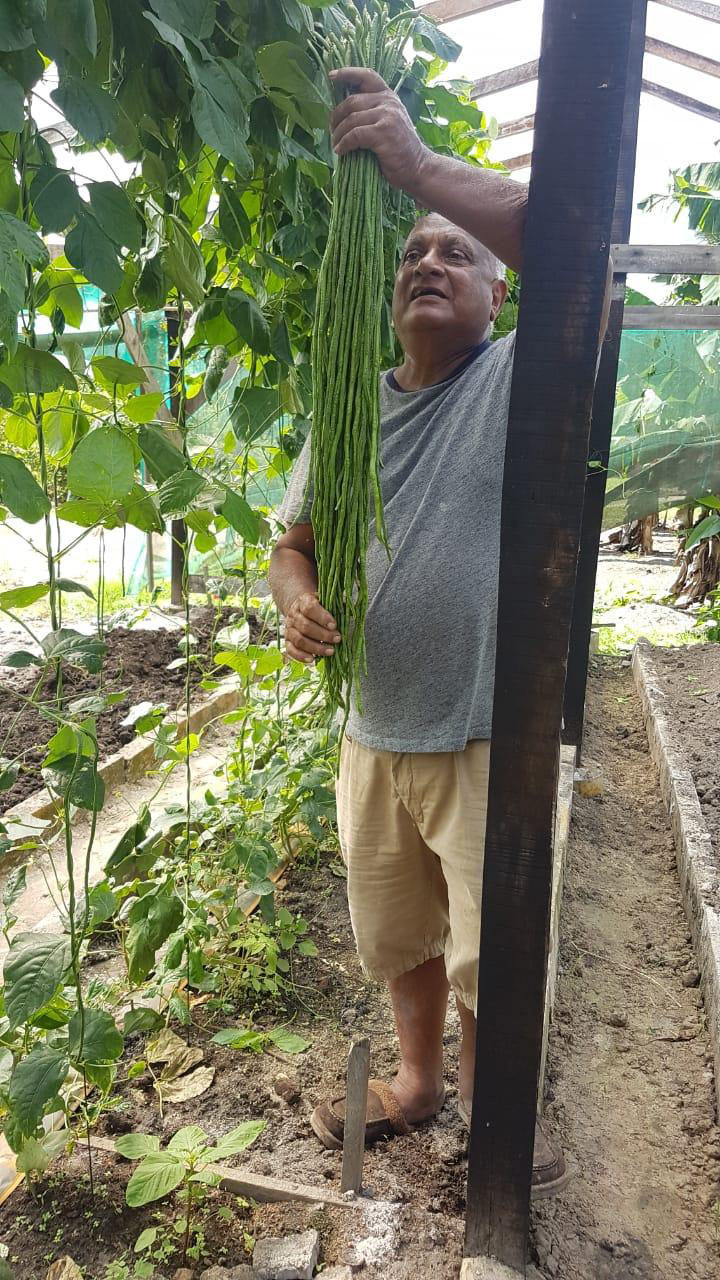These are not Ji Eshwar Chandra’s best days. Over the past several weeks, the Aurora, Essequibo Coast shade house farmer has had to endure the agony of watching much of his produce go un-reaped because, he says, “markets have dried up.” He is blunt about his dilemma. “I have no market for my produce and I wish that the Guyana Marketing Corporation would hold a Farmers’ Market in Essequibo so that I can establish contacts and sell,” Chandra says. He believes that there is a lot of money in agriculture but that some farmers see very little of it.
By now, in previous years, the GMC might well have staged at least one Farmers’ Market. This year the national protocols associated with sizeable public gatherings prohibit this. While Chandra is not insensitive to that reality, he is concerned about the impact of the restrictions on the ability of the farmers to make an adequate living. He says that in the not too distant past his crops would earn him around $30,000 per week. His ‘take home pay’ is about half of that these days. Once the pandemic is behind us, he wants the GMC and the various other state institutions to accelerate their efforts to ensure that an enabling environment is created for the country’s farmers in the shortest possible time.
The dried up market in his immediate community and adjoining ones has caused him to venture into Supenaam, about three miles from his homestead. In different circumstances Suddie and Anna Regina might have been potentially lucrative options. Not so these days.
For emphasis Chandra reminds of instances when failure is not easy to take. Some time ago he planted 200 celery roots. Fifty were sold. “The rest died because I was unable to sell them.” A succession of ‘hard knocks’ like this one can ruin a farmer. For Sharma, those knocks are hard to take. He says that up to last year, farmers could get up to $1,500 for a kilogram of celery. At this time however, buyers have set their faces against prices that are in excess of $300 per kilo. The reason? Whereas not so long ago, green seasonings were brought to the Essequibo Coast from Parika and even from as far as Berbice, this is not the case these days. Several Essequibo Coast farmers are currently planting these same seasonings. Competition has forced prices down.
Chandra, who trades under the name Rainbow Farm, desperately wants to see the back of COVID-19. From the beginning of this year he has had to endure, with metronomic regularity, the pain of watching his produce rot. His losses have, on occasion, amounted to the equivalent of three shade houses worth of produce.
Leaving the current market travails aside, Chandra says that he is currently battling the Nematode, a parasitic worm that eats away at the roots of the plants. He has been instructed in ‘remedies’ for the affliction which he has tried. Still, he is unable to control the disease. The symptoms, he says, are the yellowing or wilting of the leaves. In other instances the leaves are tiny. Chandra says that you become aware of the nature of the malady only after you uproot the entire plant. “It is only then that you see the swelling of the root.” He has engaged the NAREI extension officer responsible for the Essequibo Coast and has received helpful instructions as to how to tackle the disease.
At seventy-four, his love for farming remains undiminished. He credits his parents for his ‘love of the land.’ He grew up watching them plant rice and tend kitchen gardens. There is, he says, a particular satisfaction that derives from eating what you grow. Chandra’s current range of crops under cultivation includes celery, shallot, Scotch Bonnet pepper, tomato, cucumber and lettuce. He also rears layers.
Chandra was introduced to shade house farming about a decade ago by a visiting group from Partners of the Americas. That has been good to him and now he wants to take a tilt at hydroponic farming. It is, he says, less challenging and “cleaner.” He likes the idea of rearing plants without the aid of soil. His own research also tells him that crops cultivated hydroponically have a longer ‘shelf life.’ He also likes the idea of being able to plant and reap all year round.
After he had set the current challenges associated with farming aside during his discourse with the Stabroek Business, Chandra began to ‘wax’ nostalgic. He recalls that he had gotten into rice farming in 1972. After three decades, a bad crop and “family issues,” he left rice behind and migrated to Georgetown where he got into the “food business.” A decade in that line of work was enough for him. The land was his calling and he returned to it in 2010. It was around that time that he encountered visitors to the country from Partners of America who introduced him to shade house farming.
These days, Chandra appears untroubled and content. There are days when, having given the routine attention to his plants, he would stand at the entrance to the shade house and sing to them.






